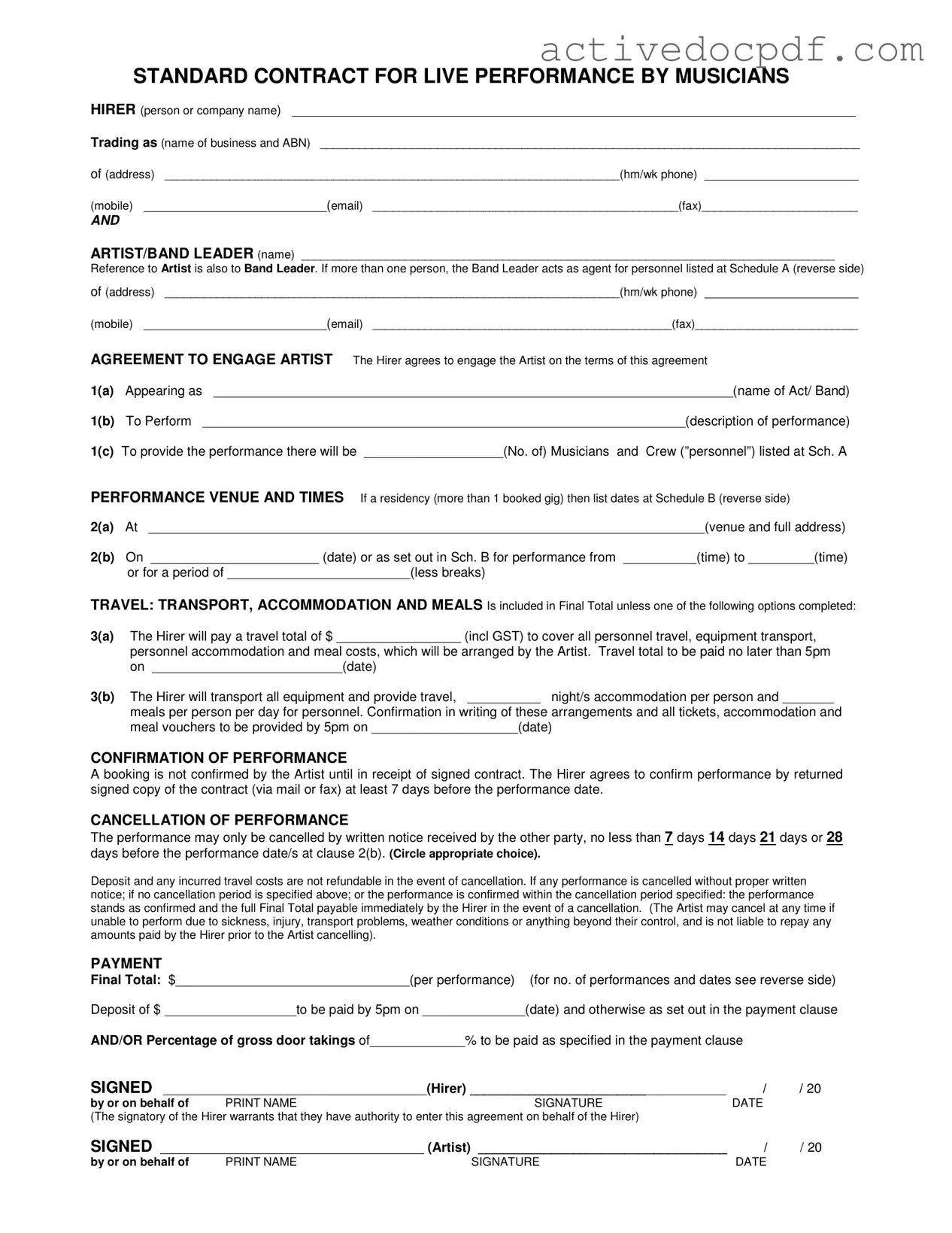Misconception 1: The Live Performance Contract is only for large events.
This form is suitable for any live performance, regardless of size. Whether it’s a small gig or a major concert, the contract provides essential terms to protect both the artist and the hirer.
Misconception 2: Once signed, the contract cannot be changed.
While the contract is a binding agreement, it can be amended if both parties agree. Any changes should be documented in writing to avoid confusion later.
Misconception 3: The hirer is responsible for all costs, including travel and accommodation, without discussion.
The contract outlines options for travel and accommodation costs. The hirer and artist can negotiate who will cover these expenses before the performance.
Misconception 4: A performance is automatically confirmed once the contract is signed.
For a performance to be confirmed, the artist must receive a signed copy of the contract. It’s important for the hirer to return the signed contract on time.
Misconception 5: The artist can cancel the performance without any consequences.
While the artist can cancel due to unforeseen circumstances, they are not liable for any amounts paid by the hirer. However, the hirer must follow specific cancellation procedures to avoid losing their deposit.
Misconception 6: The contract does not cover what happens if the performance is delayed or interrupted.
The contract clearly states that if a performance is delayed or interrupted due to the hirer's actions, the full payment is still required. This protects the artist's time and effort.
